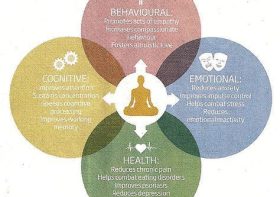Exercise for Anxiety: Techniques to Find Calm

Anxiety is a common mental health issue that affects millions of people worldwide. Finding effective ways to manage anxiety is crucial for maintaining overall well-being. While there are various strategies to cope with anxiety, exercise has been proven to be an effective technique to find calm and reduce anxiety symptoms. In this article, we will explore different exercises that can help you combat anxiety and improve your mental well-being.
The link between Exercise and Anxiety
Research has shown a strong connection between exercise and anxiety reduction. When you engage in physical activities, your brain releases endorphins, also known as “feel-good” chemicals. These endorphins interact with the receptors in your brain, reducing pain and triggering positive emotions. Regular exercise not only improves your physical health but also supports a healthy mind.
1. Aerobic Exercises:
Aerobic exercises, such as running, swimming, or cycling, are excellent for reducing anxiety. These exercises increase your heart rate and stimulate the production of endorphins. Aim for at least 30 minutes of aerobic exercise at moderate intensity, three to five times a week. Regular aerobic exercise can significantly reduce anxiety symptoms and promote relaxation.
2. Yoga and Meditation:
Yoga and meditation are ancient practices that promote relaxation and calmness. Through various poses, breathing exercises, and mindfulness, you can learn to manage stress and anxiety effectively. Both yoga and meditation focus on the mind-body connection, helping you achieve inner peace and mental clarity. Consider joining a yoga class or practicing meditation at home to experience the benefits.
3. Strength Training:
Strength training is not only beneficial for building physical strength but also for alleviating anxiety. When you engage in strength training exercises, your body releases endorphins, which boost your mood and reduce stress. Additionally, strength training can enhance self-confidence and improve body image, further reducing anxiety symptoms. Incorporate strength training exercises, such as weightlifting or bodyweight exercises, into your fitness routine.
4. Outdoor Activities:
Spending time in nature can have a positive impact on anxiety levels. Outdoor activities, such as hiking, gardening, or simply taking a walk in the park, allow you to disconnect from daily stressors and connect with nature. Being in natural surroundings can help soothe your mind, reduce anxiety, and provide a sense of calmness. Make an effort to spend time outdoors regularly, even if it’s just for a short walk during your lunch break.
5. Mindful Walking:
Mindful walking is a simple yet effective exercise that combines physical activity with mindfulness. Instead of walking on autopilot, focus on the sensations of each step, the rhythm of your breath, and the sights and sounds around you. Mindful walking can help shift your attention away from anxious thoughts and bring you into the present moment. Practice mindful walking in a calm environment, such as a park or a quiet neighborhood.
6. Dance Therapy:
Dance therapy combines the physical act of dancing with the emotional and psychological benefits of therapy. Dancing allows you to express yourself creatively while releasing tension and anxiety. Engaging in dance therapy can help reduce anxiety and improve self-confidence and body image. Consider joining a dance class or finding online resources that offer dance therapy sessions.
Conclusion
Exercise can be a powerful tool to combat anxiety and find inner calm. Incorporating different exercises, such as aerobic exercises, yoga, strength training, outdoor activities, mindful walking, and dance therapy, into your routine can significantly reduce anxiety symptoms and improve your overall well-being. Remember that consistency is key – make exercise a regular part of your life to experience the positive effects on your mental health.


